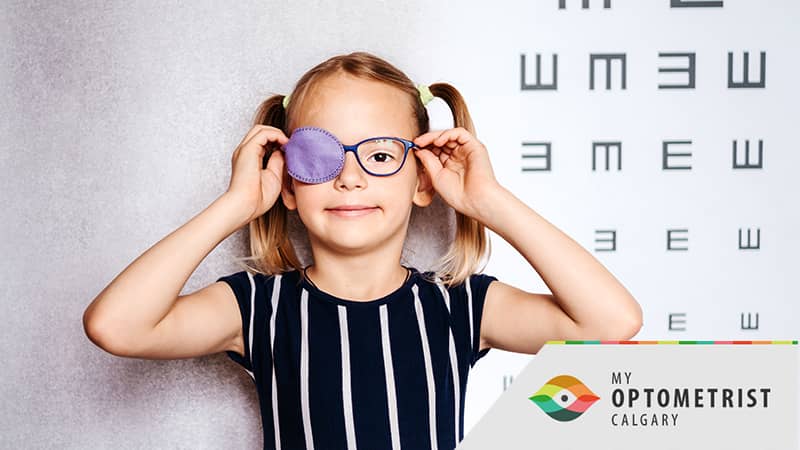
This eye condition typically develops before the age of 7 and is the leading cause of decreased vision in a single eye among children. Amblyopia most commonly affects only one eye, although it is possible for it to affect both eyes, which is called bilateral amblyopia, often caused by some type of vision obstruction. Because of the way the brain perceives vision, some people may not know they have amblyopia particularly when their amblyopia is not paired with strabismus (crossed eye), which is often associated with amblyopia. One of the many common misconceptions about amblyopia is the idea that these two conditions can be used synonymously. Here are other truths about amblyopia that you may not know.
Facts About Lazy Eye (Amblyopia)
Lazy Eye And Crossed Eyes Are Not The Same. Amblyopia (commonly called lazy eye) is often confused with strabismus (commonly called crossed eyes, wandering eye, or turned eye). Crossed eye is a condition that causes an issue with eye alignment where both eyes do not look at the same focal point. Lazy eye is a problem with the development of visual acuity (clear eyesight), not with the direction the eye points.
Lazy Eye Is Often Caused By Crossed Eyes. This is one of the reasons why it is important to differentiate the two: strabismus is the leading cause of amblyopia. When the eyesight is poorly aligned, it can cause double vision, which is difficult for the brain to process. This leads to a phenomenon called suppression, in which the brain ignores one of the images so that it can focus on and understand what it is seeing from one eye instead of trying to rectify two different focal points. Because the image from one eye is being suppressed, the vision in that eye becomes weaker.
Lazy Eye Can Exist Without Showing To The Outside World. Because amblyopia affects visual acuity, a person can have perfect eye alignment and still have a lazy eye. Having amblyopia does not mean the affected eye is blind, but it does mean there is a vision discrepancy between the two eyes. For example, one eye may be nearsighted and the other eye is not. The brain will suppress the nearsighted eye so that it is focusing on the least blurry image available, but that doesn’t mean the suppressed eye will turn or wander.
Lazy Eye Can Be Treated At Any Age. It used to be thought that amblyopia could only be treated in what was known as the “critical period” when a person was in early childhood, but that has since been debunked. Even though it is easier to treat this condition while a person is still young, we now know that amblyopia can be treated and corrected at any age.
Amblyopia Can Cause Binocular Vision Impairment. Binocular vision (when there are two eyes on the front of the head that look forward) enables 3D perception and creates depth perception. When a person has amblyopia, their depth perception often becomes skewed and they may struggle with tasks involving hand-eye coordination. Amblyopia can also cause difficulty reading, as words can sometimes appear to move on the page. Many sufferers of amblyopia experience double vision, although some only experience it on occasion while others experience it frequently.
My Optometrist Can Detect Amblyopia During A Comprehensive Eye Exam
Amblyopia often presents in early childhood and while it can be treated at any age, it is easiest to treat when young. The eye doctors at My Optometrist can identify strabismus and/or amblyopia during a comprehensive children’s eye exam. After the exam, you can discuss treatment options such as prism glasses, vision therapy, and potentially surgery. To assess if your child has amblyopia, schedule a children’s eye exam at My Optometrist. To book an eye exam at one of our three locations, either at Health First in SE Calgary, Sunridge in NE Calgary, or Three Hills, AB, please call us or fill out the online contact form.
FAQ
Q: What are your chances of getting amblyopia?
A: This condition is very common in children, and symptoms may be difficult to distinguish from other visual conditions. This affects at least 2-3 out of every 100 children. It should be treated in early childhood, otherwise the condition persists into adulthood.
Q: How do you know if your child has a lazy eye?
A: During a children’s eye exam, your optometrist will complete a series of simple, but effective, eye tests to confirm the suspicion of amblyopia. These tests will help to identify and detect eye strengths, weaknesses, and brain-eye connections.
Q: Can adults get amblyopia?
A: Although amblyopia typically is found in children, some adults can develop the condition later in life most likely due to trauma or an eye condition that affects the vision in one eye.